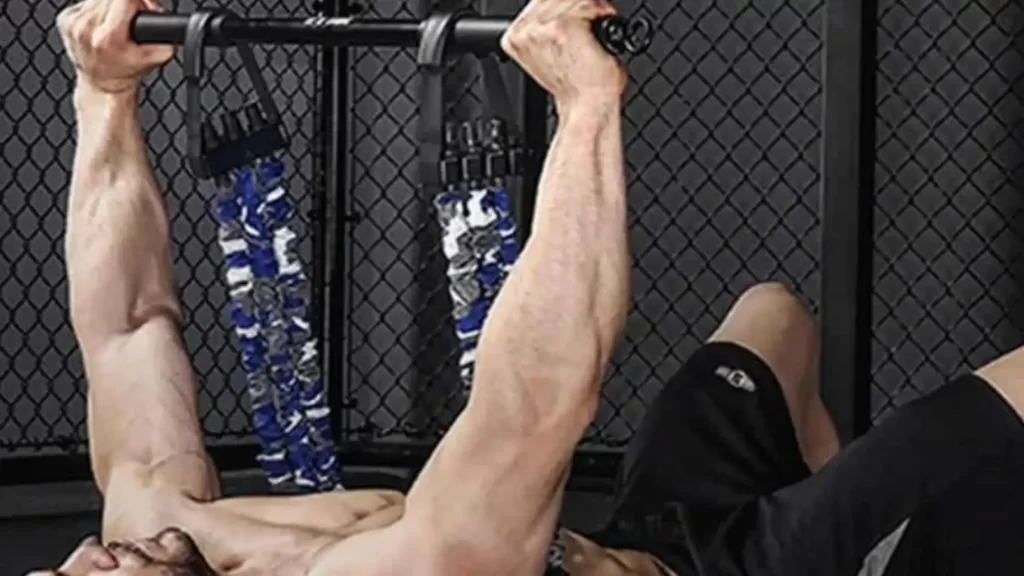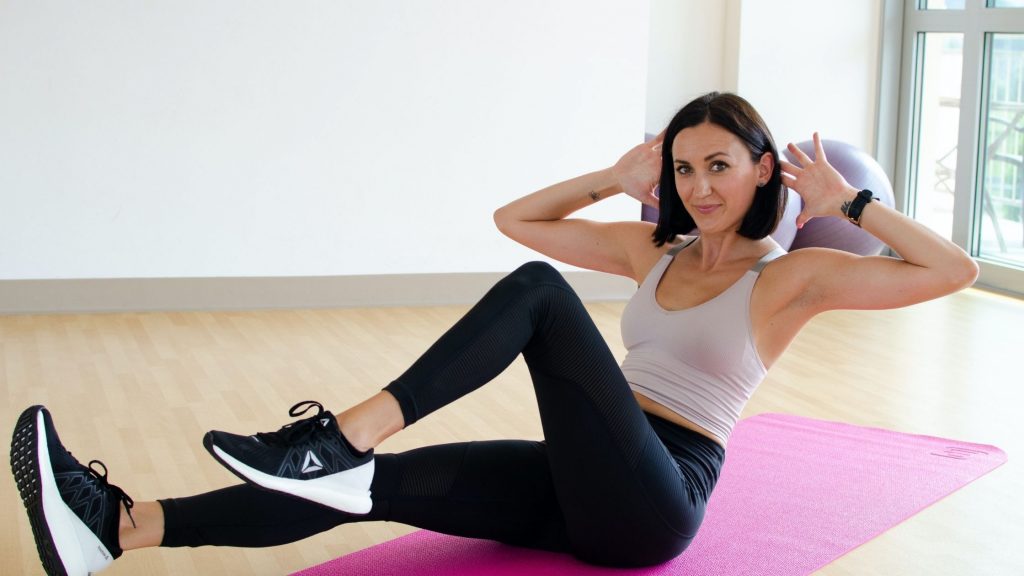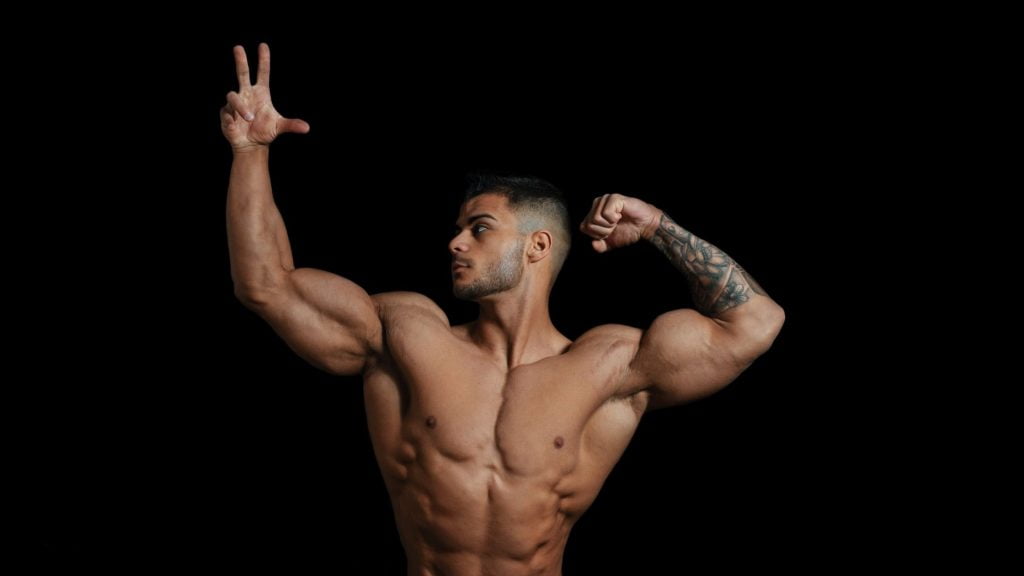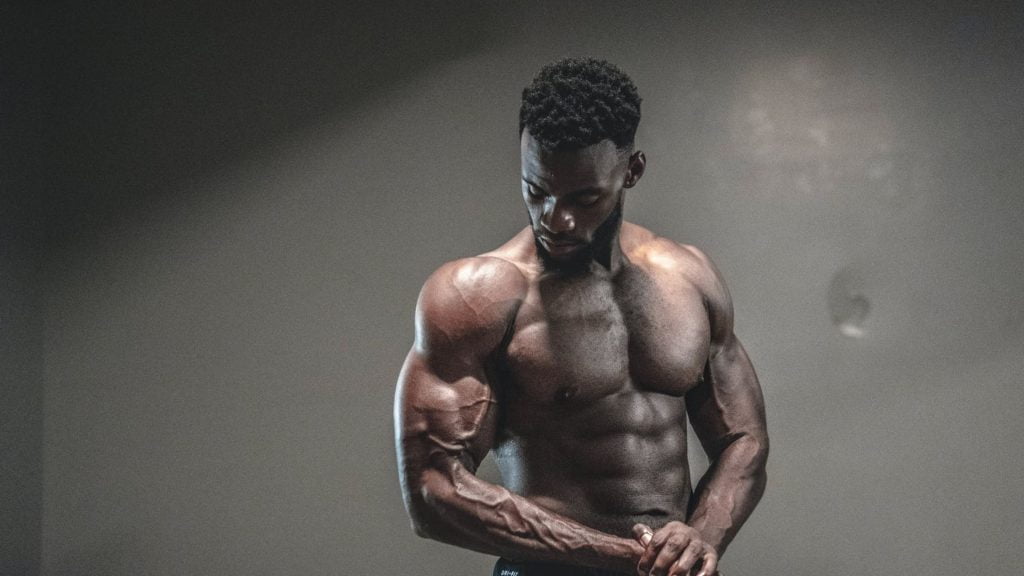The single leg press is a great exercise for the posterior chain (glutes, hamstrings, and lower back). These muscles are critical for athletic development and functional strength. The squat is often thought of as the king of lower body exercises. The squat is fantastic for developing lower body strength, but it doesn’t effectively target the glutes.
I’m Pavel Krotov and over the past 12 years I’ve helped countless busy professionals upgrade their lifestyles and achieve amazing results. Whether it’s helping them improve their nutrition or training, or overcoming mental blocks that might otherwise hinder them from achieving their full potential, my expertise comes from a lifetime of challenging myself to do what needs to be done so as not to become distracted from reaching my highest potential as a knowledgeable expert in my field.
Single leg press is one of the best exercises for targeting the glutes. This article will give you an example of how you can do this exercise with perfect form.

IN THIS ARTICLE
What is Single Leg Press?
The single leg press is the underdog in the world of bodybuilding, but in truth it’s one of the most beneficial compound leg exercises you can include in your workout routine. It limits movement so it allows you to go deeper in your sets to build more muscle and work both your legs and glutes equally. But do not be fooled by this machine’s humble reputation.
While it might not get as much recognition as its counterpart, the back squat, which requires balance, coordination and stability; this exercise still offers enormous benefits. If you are focusing on simple strength training that allows you to increase size while also building endurance then look no further than this underrated exercise which targets all major muscles of the lower body!
A single leg press is a great way to target your glutes and quadriceps, and it’s a great exercise for stabilizing your knee. The single leg press builds strength and stability in your knee joint and helps protect you from injury, and it also isn’t as hard on your knees as regular squats. The single leg press is a variation of the standard leg press.
The machine has a pad that supports the back of your knee, which you press against as you lower and raise your leg. This machine forces you to support your leg with only one leg, making it one of the single leg exercises. The machine also brings the weight stack over your head, which helps you keep your balance as you lift and lower your leg.
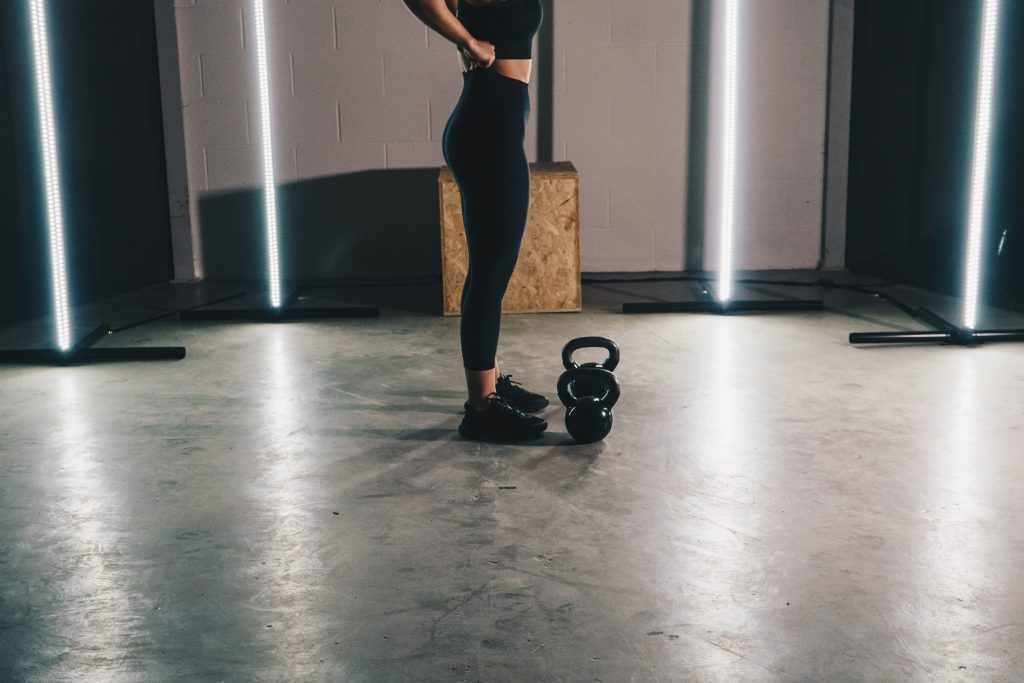
Benefits of Single Leg Press
Strengthening Gluteal Muscles
The gluteal muscles are one of the largest muscles in your body and consist of several muscles. The main role of these glutes is to move the leg back and forth as well as rotate the thigh inwards or outwards. One way that you can work on strengthening your glutes is by performing a single leg press, which engages your glutes during a number of different phases.
When you’re performing the exercise, it engages your glutes during both the extension or lifting phase as well as during the control or holding phase! Also, make sure to use proper techniques so that you don’t strain anything!
Strengthening Quadriceps
Single-Leg Press also works your quadriceps. Your quadriceps are the group of muscles at the front of your thighs (between your hips and knees). They’re the largest muscle group in your body! It’s to be expected that they’d work hard because you use them a lot – every time you walk or run during your day-to-day activities, for example.
Leg presses target your quadriceps a lot during the bounce portion and lift phase, so it’s no wonder why so much power is being used from this area, as it needs to support certain key movements throughout this procedure.
Stronger Calves
Another reason the single leg press is considered to be a beneficial leg exercise has to do with strengthening. This time, it’s not about your quadriceps and instead focuses on your calves. The calf muscles are those located on the lower legs, and they’re directly below the larger muscles of your upper legs (which you strengthened during the squat).
Although squats definitely target these smaller muscles as well, sometimes focusing on them separately can provide you with even more targeted strengthening as opposed to when focusing on other exercises such as squats.
During this leg exercise, your calves mainly act as secondary stabilizers – so let’s say for example that your right foot is at the bottom position; it’s responsible for providing stability and support while the rest of the lower half of your body does most of the work involved in lifting and lowering weights.
Strong Hamstrings
Doing leg presses on a regular basis is a great way to develop the shape and strength of your hamstrings. Your hamstrings are the muscles that extend from your gluteal muscle and go all the way down to your knee. You will most likely engage them for quite some time when doing leg presses. It also helps strengthen your quadriceps, which are located at the front of your thighs and will help build overall balance in your physique!
Stronger Bones
Another part of your body that benefits from doing leg presses are your skeleton and it is thanks to something we call a weight-bearing exercise. A weight-bearing exercise can be defined as any kind of exercise that puts increased pressure, stress, or weight on your bones. This comes in the form of either pushing weight away by using an arm overhead dumbbell raise or pulling weight closer to you by doing bicep curls.
The latter example serves as an example for this particular leg press machine because it works your entire lower body but helps create long lean legs with each rep you complete.
How To Perform Single-Leg Press:
Begin with the bars set up and the correct amount of weight for your desired workout and sit down on the machine placing one foot in front and parallel to the side of the rest. Slowly extend your leg away from you to release the weight off of its grooves, and slowly lower your foot until it is at a 45-degree angle (or even greater if you like).
Squeeze your glutes back into your leg (by pressing through your heels or pushing harder against the ground) holding it in place for a count, then returning back to where you began. This completes one rep! Repeat until you feel that familiar burn in those glutes, then it’s time for a short break and onto another set!
Note: In order to get results over time, consistency over intensity is usually better so be sure to repeat this exercise several times throughout each day until you’ve reached your fitness goals.
Single Leg Press Variations
Side Leg Press
The side leg press can appear to be slightly comical but it comes with a hidden not-so-hidden feature. Not only will you be sitting sideways, but you’ll also be propped up on one knee which changes the muscle emphasis to make this move even more beneficial to you. Here’s how to do it:
How to perform:
Settle into the leg press seat by facing to the left, placing your left knee on the footplate, and resting your right leg up at an angle. When you are ready, remove the safety restraints for this equipment.
Bend your right knee halfway to a 90-degree angle and press against the footplate with your left leg until you are back in the starting position which is fully extended up towards the sky. This one repetition helps build strength into that same side of your body.
Take it slow, only allow 10-12 repetitions maximum otherwise injury can occur which is certainly not something beneficial when trying to achieve fitness goals!
Standard Single Leg Press
This is the single leg press variation that’ll begin with your back foot close to a weight bench or machine, with your chest facing forward and holding onto any handles available for support. The major muscle groups targeted during this exercise are the quads, hamstrings, and glutes.
How to perform:
Set the safety bars in place on the machine and then sit in the seat, placing your left leg in between both bars. Your leg should be placed directly under your hip. Foot placement is not particularly important here. Unlock and remove the safety bar for your left side and make sure it’s out of the way before pressing out with upwards momentum through your legs.
Continue to push against this resistance until your body reaches about a 90-degree angle, and once you’ve reached this point use whatever strength you have left to press up through your right leg until you are completely out of the seat again. Repeat this 10-12 times for each leg before switching sides.
Side Leg Squat
The side squat seems to be similar to the side leg press. One of the most significant differences between a side leg squat and a side leg press is that on the former, your supporting knee is allowed to bend at an angle. This allows you to target your glutes and hamstrings more deeply as compared with the latter which makes it easier for you to stabilize yourself as you execute each rep. Here’s how you can do it:
How to perform:
Place your right foot on the footplate of the leg press machine. Push against it so that you’re leaning forward slightly, then turn to face the direction where the plate racks are.
Once you get into position, go ahead and lock down your safety restraints. Next, bend your right knee close to 90 degrees while keeping your heel pressed against the footplate. When you’re ready, push against the plate with your heel while also pressing back up with your leg until you’ve returned to starting position. This is one rep; make sure to do 10-12 reps before switching legs.

ALSO READ: Cable Back Workout – 10 Useful Exercises For Bigger & Stronger Back
Single Leg Press Alternatives
You might be surprised to learn that there are many effective alternatives you can do right at home to work the same muscle groups as the single-leg press without having access to a leg press machine.
Single Leg Smith Machine Squats
Smith machine squats are one of several weightlifting exercises that require equipment. Basically, smith machine is requires to perform the movement, while an exercise bench is useful for performing other exercises.
How to perform:
First of all, you should ensure that the bench is placed inside or outside of the smith machine on your side of choice. This will be about 2-3 feet away from the bar. Adjust this distance based on your own preferences. Facing away from the bench, get down underneath it and place it onto your traps like you would to ready for a squat.
Lift one leg off the ground and place your foot on top of the bench behind you. Tighten your core and bend your standing knee to perform a single leg squat motion while remaining flat-footed on the ground with both feet until the angle close to 90 degrees is reached before reversing direction and returning to starting position.
Weighted Step-Ups
Weighted step-ups are an excellent way to build strength, size and definition in your legs. When you do this exercise properly, the legs will get a workout while also building up that upper back and shoulders.
To perform weighted step-ups, grab either a dumbbell or kettlebell and hold it in each hand to start off. For different variations of these weighted step-ups, you can hold a barbell on your trap (similar to a squatting position) instead of having to use two hands during the entire process. You’ll also need something to step onto such as a bench or staircase if you’re performing them indoors.
How to perform:
Stand behind the bench with your weights in each hand resting at your side (or barbell on your back). Raise one leg for support for at least three seconds before adding weight.
This leg will be the working leg, so lower it to about 90 degrees, which is about how high you’d go with a knee raise Bulgarian split squat, but you shouldn’t stop right there. Push up through the heel of the elevated foot and raise yourself onto the top of the bench until you are completely standing on top of it. Reverse this movement by pushing through the elevated heel to return back to the flooring underneath you where you belong thus completing one rep!
Bulgarian Split Squats
Bulgarian split squats are more than just an excellent exercise for the lower body; they can be a benefit to your overall well-being and fitness routine. Because of the simplicity and lack of extensive equipment involves, anyone can start on this – whether at home or in a studio setting. “Anyone” includes you!
How to perform:
With weights in each hand, stand sideways in front of the bench. Lift one leg off the ground and place your toes on top of the bench behind you. As you go into a squat position, make sure to keep your core tight at all times to protect your back from injury. Once your knee is almost close to a 90-degree angle, reverse the movement to return to starting position.
Optional: have someone hold onto your feet for added balance if it’s easier. we can do this using just one arm with free weights in order to work different muscles in different ways!
Single Leg Squat to Box
The single-leg box squat, in which you stand on one leg, using only a bench or other piece of furniture for guidance, is ideal if you want to challenge the muscle strength in your lower body while minimizing stress. You can add more resistance to this exercise by holding weights in each hand.
How to perform:
With a bench or a box behind or beside you, stand on one leg or both whilst holding weights in case of the former.
If using weights, make sure not to drop both hands all the way down to your sides but instead keep them by your side while bending over slowly till your butt touches the bench before slowly driving through the heel on whichever leg is bent at this point. You can even add a variation where you drive through the heels of both feet and touch the bench/box with both of your hands for more resistance and challenge!
ALSO READ: Trap Bar Deadlift – Benefits, 3 Variants & Right Technique
Weighted Walking Lunges
Some people who lift weights might look at walking lunges and reminisce about the good old days. Their dual emphasis on various muscle groups – including your legs, glutes, and hamstrings – makes them great go-to exercises for both strength training and building tone too. Make sure that you have enough room to do these properly by setting up in an area with enough space before starting.
How to perform:
Step forward with a dumbbell or kettlebell in each hand, then slowly bend your knees until you can place one weight on the floor in front of you while gently tapping the opposite knee to the ground.
Try to hold this position for a moment before slowly bringing yourself back up until both feet are back under your torso. Step forward with your opposite leg and repeat by bending your knee until it taps the ground in front of you. Again, try to hold before raising yourself again.
Conclusion:
If you’re looking to really increase your leg strength and power, it’s time to start incorporating single-leg presses into your routine. Single-leg presses are an excellent way to really challenge your muscles and not only make them bigger, but stronger as well. Start slow and work your way up as you get stronger.
FAQs
Does the leg press make your bum bigger?
The hamstrings, back, and shoulders are likely to get sore during a leg press, but the bum muscles aren’t targeted because they aren’t a focus. Thus, while taking part in a leg press, you’re unlikely to strengthen your glutes so much that they noticeably grow in size.
What muscles does single leg press work?
The single-leg leg press is an exercise machine that primarily targets the quadriceps. It also to a lesser extent also targets your glutes – which is obvious if you think about the fact that every time your right foot leaves the ground it does so by pushing backward.
Is leg press bad for knees?
You can hurt yourself if you press down with too much weight; if you lock out your legs when extending them; or if you let your knees cave in toward each other while contracting the target muscles.
How many leg presses should I do?
If you’re a beginner, try to press one-half of your weight. Do about 10 to 12 reps with this amount.




